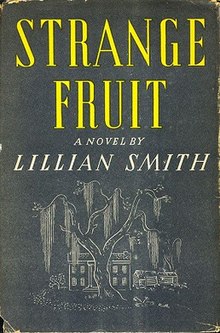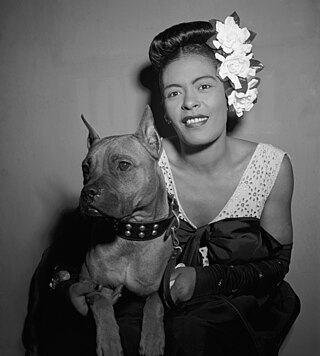
Billie Holiday was an American jazz and swing music singer. Nicknamed "Lady Day" by her friend and music partner, Lester Young, Holiday made a significant contribution to jazz music and pop singing. Her vocal style, strongly influenced by jazz instrumentalists, inspired a new way of manipulating phrasing and tempo. She was known for her vocal delivery and improvisational skills.

"Strange Fruit" is a song written and composed by Abel Meeropol and recorded by Billie Holiday in 1939. The lyrics were drawn from a poem by Meeropol published in 1937. The song protests the lynching of Black Americans with lyrics that compare the victims to the fruit of trees. Such lynchings had reached a peak in the Southern United States at the turn of the 20th century and the great majority of victims were black. The song has been called "a declaration" and "the beginning of the civil rights movement".

Frank Garvin Yerby was an American writer, best known for his 1946 historical novel The Foxes of Harrow.
"Banned in Boston" is a phrase that was employed from the late 19th century through the mid-20th century, to describe a literary work, song, motion picture, or play which had been prohibited from distribution or exhibition in Boston, Massachusetts. During this period, Boston officials had wide authority to ban works featuring "objectionable" content, and often banned works with sexual content or foul language. This even extended to the $5 bill from the 1896 "Educational" series of banknotes featuring allegorical figures that were partially nude.
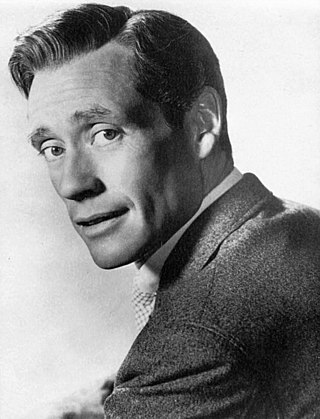
Melchor Gastón Ferrer was an American actor and filmmaker. He achieved prominence on Broadway before scoring notable film hits with Scaramouche, Lili, and Knights of the Round Table. He starred opposite his wife, actress Audrey Hepburn, in War and Peace and produced her film Wait Until Dark. He also acted extensively in European films and appeared in several cult hits, including The Antichrist (1974), The Suspicious Death of a Minor (1975), The Black Corsair (1976), and Nightmare City (1980).
"Strange Fruit" is a 1937 poem and song written by Abel Meeropol, made famous by Billie Holiday in 1939 and then covered by many other performers.
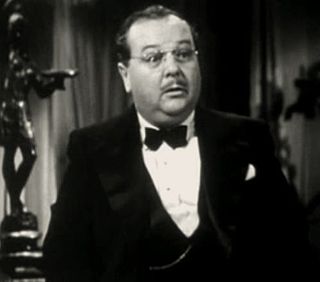
Lloyd Corrigan was an American film and television actor, producer, screenwriter, and director who began working in films in the 1920s. The son of actress Lillian Elliott, Corrigan directed films, usually mysteries such as Daughter of the Dragon starring Anna May Wong, before dedicating himself more to acting in 1938. His short La Cucaracha won an Academy Award in 1935.

Ian Keith was an American actor.
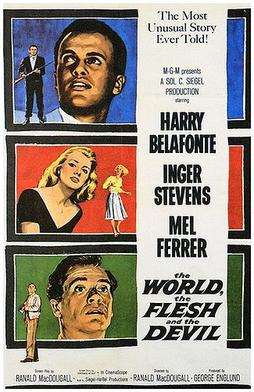
The World, the Flesh and the Devil is a 1959 American science fiction doomsday film written and directed by Ranald MacDougall. The film stars Harry Belafonte, who was then at the peak of his film career. The film is set in a post-apocalyptic world with very few human survivors. It is based on two sources: the 1901 novel The Purple Cloud by M. P. Shiel and the story "End of the World" by Ferdinand Reyher.

Sue Bailey Thurman was an American author, lecturer, historian and civil rights activist. She was the first non-white student to earn a bachelor's degree in music from Oberlin College, Ohio. She briefly taught at the Hampton Institute in Virginia, before becoming involved in international work with the YWCA in 1930. During a six-month trip through Asia in the mid-1930s, Thurman became the first African-American woman to have an audience with Mahatma Gandhi. The meeting with Gandhi inspired Thurman and her husband, theologian Howard Thurman, to promote non-violent resistance as a means of creating social change, bringing it to the attention of a young preacher, Martin Luther King Jr. While she did not actively protest during the Civil Rights Movement, she served as spiritual counselors to many on the front lines, and helped establish the first interracial, non-denominational church in the United States.

Lillian Eugenia Smith was a writer and social critic of the Southern United States, known for both her non-fiction and fiction works, including the best-selling novel Strange Fruit (1944). Smith was a White woman who openly embraced controversial positions on matters of race and gender equality. She was a southern liberal who was unafraid to criticize segregation and to work toward the dismantling of Jim Crow laws at a time when such actions virtually guaranteed social ostracism.

The Lillian Smith Book Awards' are an award which honors those authors who, through their outstanding writing about the American South, carry on Lillian Smith's legacy of elucidating the condition of racial and social inequity and proposing a vision of justice and human understanding. The award is jointly presented by the Southern Regional Council and the University of Georgia Libraries.
Lost Boundaries is a 1949 American film starring Beatrice Pearson, Mel Ferrer, and Susan Douglas Rubeš. Directed by Alfred L. Werker, it is based on William Lindsay White's story of the same title, a nonfiction account of Dr. Albert C. Johnston and his family, who passed for white while living in New England in the 1930s and 1940s. The film won the 1949 Cannes Film Festival award for Best Screenplay. The use of white actors in the film's leading black roles proved controversial. The film was banned in Atlanta, Georgia, and Memphis, Tennessee.
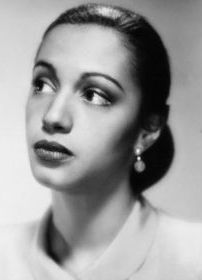
Jane White was an American actress and singer best known for her Broadway and off-Broadway stage performances. She won Obie Awards in 1966 for her performance in a Shakespeare in the Park productions of Love's Labour's Lost and Coriolanus and in 1971 for sustained achievement.

Ralph Adrian Ulveling was an American librarian best known for his support of intellectual freedom, interracial understanding, and the advancement of the library and information science profession. He is listed as one of the most important contributors to the library profession during the 20th century by the journal American Libraries.
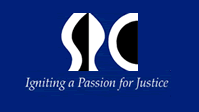
The Southern Regional Council (SRC) is a reform-oriented organization created in 1944 to avoid racial violence and promote racial equality in the Southern United States. Voter registration and political-awareness campaigns are used toward this end. The SRC evolved in 1944 from the Commission on Interracial Cooperation. It is headquartered in Atlanta, Georgia.

Recy Taylor was an African-American woman from Abbeville in Henry County, Alabama. She was born and raised in a sharecropping family in the Jim Crow era Southern United States. In the 1940s, Taylor's refusal to remain silent about her rape by white men led to organizing in the African-American community for justice and civil rights.
From the end of the Second World War to the beginning of the McCarthy era (1945–1950), the American professional theatre produced twenty shows on civil rights, nine of them on Broadway.
In the past, leaders of the Church of Jesus Christ of Latter-day Saints have consistently opposed marriages between members of different ethnicities, though interracial marriage is no longer considered a sin. In 1977, apostle Boyd K. Packer publicly stated that "[w]e've always counseled in the Church for our Mexican members to marry Mexicans, our Japanese members to marry Japanese, our Caucasians to marry Caucasians, our Polynesian members to marry Polynesians. ... The counsel has been wise." Nearly every decade for over a century—beginning with the church's formation in the 1830s until the 1970s—has seen some denunciations of interracial marriages (miscegenation), with most statements focusing on Black–White marriages. Church president Brigham Young taught on multiple occasions that Black–White marriage merited death for the couple and their children.
Frank Eugene Taylor was an American book publisher and movie producer. During his four-decade career in publishing he worked with authors including Vladimir Nabokov, Eldridge Cleaver, and George Orwell. His work as a producer in Hollywood includes the 1961 film The Misfits. Taylor's papers are held at the Lilly Library, Indiana University, Bloomington, Indiana, and include correspondence with Charlie Chaplin, James Agee, Ralph Ellison, and Christopher Isherwood.
